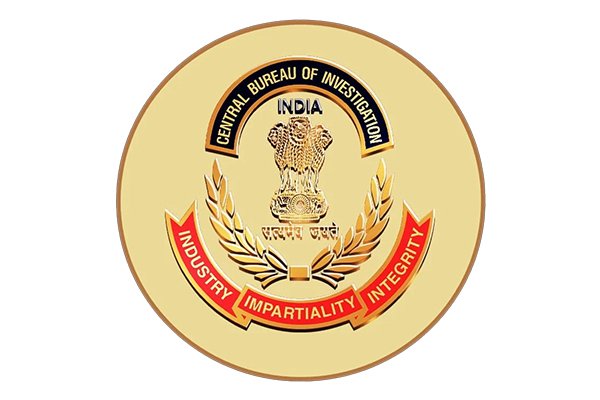As the Central Bureau of Investigation (CBI) celebrates its Foundation Day, it is imperative to recall a major controversy that once rocked the country’s top investigative agency. Between October 2017 and January 2019, the CBI found itself at the center of an unprecedented internal power struggle, raising serious questions about the independence and credibility of the institution.
A Legacy Born in Wartime
The roots of the CBI can be traced back to 1941, during World War II, when the British government in India established the Special Police Establishment (SPE) to investigate cases of bribery and corruption in the War and Supply Department. After the war, recognizing the continued need for a central investigative body to tackle corruption among government employees, the Delhi Special Police Establishment Act was enacted in 1946. It wasn’t until April 1, 1963, that the organization formally received its now-familiar name, the Central Bureau of Investigation (CBI), via a Home Ministry resolution. The renaming came 22 years after the formation of SPE, marking a major evolution in its role and scope.
ALSO READ: Now Open: Pan-India Registration for Fraud Investigators!
From Corruption Watchdog to Multi-Domain Agency
Initially tasked with probing corruption involving central government employees, the CBI’s remit gradually expanded. With the formation of public sector undertakings and the nationalization of banks in 1969, these entities and their personnel also came under its purview. Today, the CBI investigates a wide array of crimes—ranging from white-collar frauds to high-profile murder cases—and remains India’s premier investigative agency tasked with upholding the rule of law.
The ‘Caged Parrot’ Controversy
Despite its vital role, the CBI has not been immune to criticism and controversy. In 2013, the Supreme Court of India famously described the agency as a “caged parrot” that “speaks in its master’s voice,” highlighting concerns about political interference.
These concerns gained renewed attention during the tumultuous events between 2017 and 2019, when a bitter feud erupted between two top officers—CBI Director Alok Verma and Special Director Rakesh Asthana. The dispute not only exposed deep fissures within the agency but also raised serious doubts about its autonomy.

The Battle at the Top
In February 2017, Alok Verma, a 1984-batch IPS officer, was appointed as the CBI Director. Tensions surfaced when Verma opposed the appointment of Rakesh Asthana, also from the 1984 IPS batch (Gujarat cadre), as Special Director. Verma cited multiple allegations pending against Asthana, claiming he was unfit for the post. By 2018, the situation had escalated dramatically. The CBI registered an FIR against its own Special Director Rakesh Asthana, accusing him of accepting a bribe of Rs 2 crore from Hyderabad-based businessman Satish Babu Sana to shield him in a case linked to controversial meat exporter Moin Qureshi.
Asthana, in turn, accused Verma of receiving the same bribe from Sana. Adding to the chaos, CBI DSP Devendra Kumar was arrested for allegedly fabricating a statement from Sana. With both top officials leveling corruption charges against each other, the credibility of the agency hung in the balance.
The Moin Qureshi Connection
At the heart of the crisis was Moin Qureshi, a meat exporter allegedly involved in massive hawala transactions. Qureshi was already under CBI scrutiny, and former CBI Director Ranjit Sinha’s name had also surfaced in connection with attempts to influence the investigation. The investigation into Qureshi’s activities sparked a chain reaction that ensnared several top CBI officials.
Government’s Response and Legal Wrangling
As the feud became public and threatened to derail the functioning of the agency, the government intervened. On October 23, 2018, both Verma and Asthana were sent on forced leave. M. Nageshwar Rao was appointed as the interim Director. Several officers were transferred, and the Central Vigilance Commission (CVC) was asked to conduct an inquiry. The matter soon reached the Supreme Court. On January 8, 2019, the apex court, in a landmark judgment delivered by then Chief Justice Ranjan Gogoi, reinstated Alok Verma as CBI Director, stating that the government had acted without following the due procedure laid out under the Delhi Special Police Establishment Act. However, Verma’s return was short-lived. A high-powered committee led by Prime Minister Narendra Modi removed him from the post within two days, citing the CVC’s findings.
Political Fallout and Public Perception
The controversy sparked a massive political uproar. Opposition parties accused the government of misusing the CBI for political ends. Then Finance Minister Arun Jaitley defended the decision to send both officers on leave, stating that it was done to ensure a fair and impartial investigation.
Legacy of the Feud
Though the dust has since settled, the Verma-Asthana saga left a lasting impact on the image of the CBI. The episode exposed the vulnerabilities of the agency and highlighted the urgent need for structural reforms to safeguard its independence.
As the CBI commemorates its foundation, the controversy serves as a reminder of the importance of transparency, institutional integrity, and the delicate balance between autonomy and accountability in India’s law enforcement framework.

